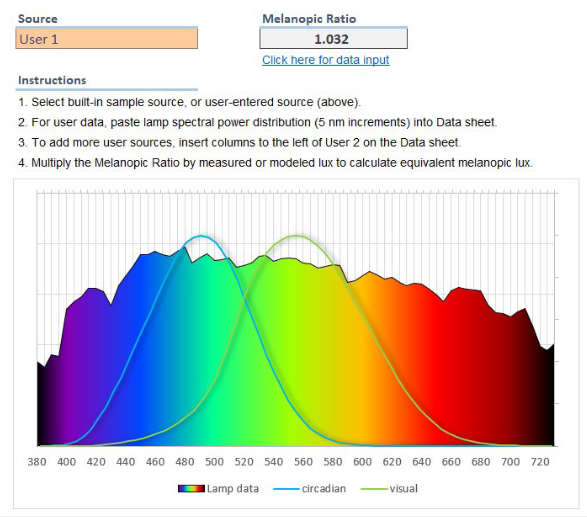A Study of Design Collaboration between Climate-based Daylight Analysis and Circadian Lighting
Main Article Content
Abstract
The objective of this research was to investigate the design collaboration of climate-based daylight evaluation and daylight design for circadian rhythm. The variables of room proportion, window to wall ratio, and orientation were considered. Rooms were modeled by Rhinoceros. Daylight performance analysis were simulated by Grasshopper and DIVA software. And, MR and EML were calculated by WELL’s tools. The results of the research showed that all of the cases that passed both sDA and ASE were the North facing opening, while using openings in other orientations were not passed the threshold. From MR and EML results, it can be concluded that daylight performance in Thailand has a good potential for providing EML. However, if referred to horizontal illuminance, it has a chance that high illuminance in the near opening area will affect user’s visual comfort. Thus, the strategies of opening design for distributing daylight or providing circadian rhythm will be a new procedure in architectural design process in order to propose practical solution in real condition.
Downloads
Article Details

This work is licensed under a Creative Commons Attribution-NonCommercial-NoDerivatives 4.0 International License.
All material is licensed under the terms of the Creative Commons Attribution 4.0 International (CC-BY-NC-ND 4.0) License, unless otherwise stated. As such, authors are free to share, copy, and redistribute the material in any medium or format. The authors must give appropriate credit, provide a link to the license, and indicate if changes were made. The authors may do so in any reasonable manner, but not in any way that suggests the licensor endorses you or your use. The authors may not use the material for commercial purposes. If the authors remix, transform, or build upon the material, they may not distribute the modified material, unless permission is obtained from JARS. Final, accepted versions of the paper may be posted on third party repositories, provided appropriate acknowledgement to the original source is clearly noted.
References
Andersen, M., Gochenour, S. J., & Lockley, S. W. (2013). Modelling ‘non-visual’ effects of daylighting in a residential environment. Building and Environment, 70, 138 - 149.
Brennan, M. T. & Collins, A. R. (2018). Outcome-based design for circadian lighting: An integrated approach to simulation & metrics. 2018 Building Performance Analysis Conference and SimBuild, 141 - 148.
Figueiro, M. G., (2013). A 24-hour lighting scheme for older adults: A pledge to the lighting community. Lighting Design and Application, 43(2), 46 - 50.
Figueiro, M. G., Gonzales, K., & Pedler, D. (2016). Designing with circadian stimulus. Lighting Design and Application, October 2016, 30 - 34.
Grondzik, T. W., Kwok, G. A., Stein, B., & Reynolds, S. J. (2010). Mechanical and electrical equipment for buildings. (11th ed.). New York: John Wiley & Sons.
International Well Building Institute. (2020). Daylight modeling. Retrieved from https://v2.wellcertified.com/v/en/light/feature/5
Konis, K. (2017). A novel circadian daylight metric for building design and evaluation. Building and Environment, 113, 22–38.
Konis, K. (2018). Field evaluation of the circadian stimulus potential of daylit and non-daylit spaces in dementia care facilities. Building and Environment, 135, 112 - 123.
Licht. (2019). Licht.wissen 19: Impact of light on human beings. Retrieved from https://www.licht.de/fileadmin/Publications/licht-wissen/1409_LW19_E_Impact-of-Light-on-Human-Beings_web.pdf
Mardaljevic J., Heschong, L., & Lee, E. S. (2009). Daylight metrics and energy savings. Lighting Research and Technology 2009, (0): 1 - 23.
Srisutapan, A. (2020). Guidelines and applications of daylight metrics for buildings in Thailand. Journal of Architectural/Planning Research and Studies. 17(1), 103 - 120.
Tuaycharoen, N. (2015). Final Report: The development of appropriate interior environment of hospital ward for senior visibility and recovery. Bangkok: Author.
U.S. Green Building Council (USGBC). (2019). LEED v4.1. Retrieved from https://new.usgbc.org/leed-v41#bdc.


